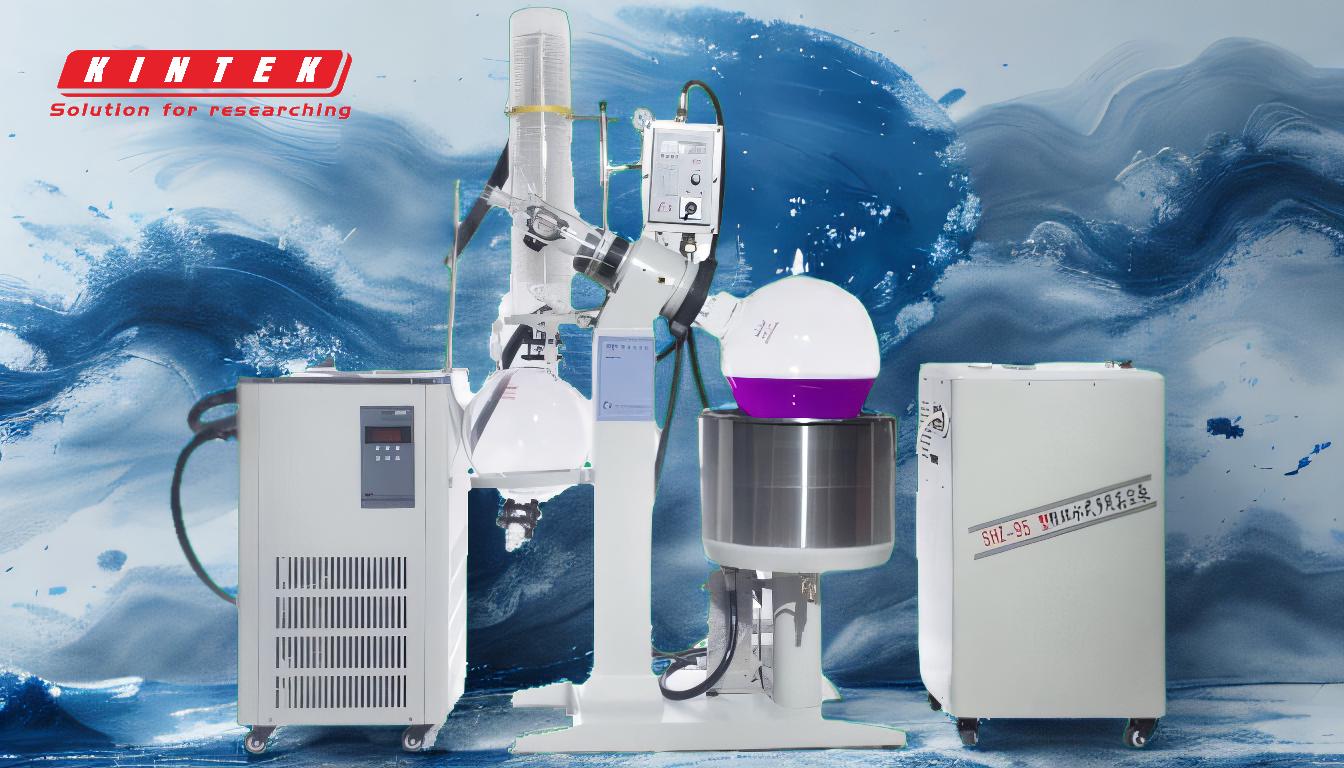Simple distillation is efficient for specific applications, particularly when separating mixtures with significantly different boiling points (typically 25°C or more). It is a straightforward and cost-effective method for isolating volatile solvents from high-boiling materials. However, its efficiency is limited when dealing with mixtures containing components with close boiling points, as it cannot achieve high purity in such cases. The process relies on heating the mixture to its boiling point and condensing the vapors, which is effective for simple separations but may require additional steps or more advanced distillation techniques for complex mixtures.
Key Points Explained:

-
Efficiency in Separating Mixtures with Large Boiling Point Differences:
- Simple distillation is highly efficient when the boiling points of the components in a mixture differ by at least 25°C. For example, it is commonly used to separate volatile solvents (e.g., ethanol or acetone) from high-boiling materials.
- This method is particularly effective when the target is to recover either the solvent or the residue, as it allows for straightforward separation without complex equipment.
-
Limitations for Mixtures with Close Boiling Points:
- When the boiling points of the components are close (less than 25°C apart), simple distillation becomes inefficient. It cannot achieve high purity because the vapors produced will contain a mixture of both components.
- In such cases, fractional distillation or molecular distillation is more appropriate, as these methods can separate components with similar boiling points more effectively.
-
Comparison with Other Distillation Methods:
- Fractional Distillation: This method is more efficient for separating liquids with close boiling points. It uses a fractionating column to provide multiple vaporization-condensation cycles, enhancing separation.
- Molecular Distillation: This technique is suitable for purifying and concentrating natural products under low vacuum pressure. It is particularly useful for heat-sensitive materials.
- Simple distillation is not inherently better or worse than these methods; its efficiency depends on the specific application and the properties of the mixture being separated.
-
Factors Influencing Distillation Efficiency:
- Vacuum Degree: A higher vacuum degree can lower the boiling points of the components, making the process more efficient. This is particularly relevant in rotary evaporators, where vacuum pumps and system tightness play a crucial role.
- Temperature Control: Maintaining an optimal heat pot temperature and cooling medium temperature ensures efficient vaporization and condensation.
- Equipment Quality: The use of high-quality materials, such as PTFE sealing rings and vacuum tubes, can improve the system's durability and efficiency.
-
Practical Applications of Simple Distillation:
- Simple distillation is widely used in laboratories and industries for tasks such as purifying water, isolating essential oils, and recovering solvents from reaction mixtures.
- It is a cost-effective and time-saving method for large-scale operations, especially when the separation requirements are not highly stringent.
-
Trade-offs and Considerations:
- While simple distillation is efficient for its intended applications, it may not be suitable for complex mixtures requiring high purity.
- Users must consider the trade-offs between simplicity, cost, and the desired level of separation when choosing a distillation method.
In summary, simple distillation is efficient for specific scenarios, particularly when dealing with mixtures with large boiling point differences. However, its limitations in handling close-boiling mixtures and achieving high purity make it less suitable for more complex separations. The choice of distillation method should align with the specific requirements of the application and the properties of the mixture being processed.
Summary Table:
| Aspect | Details |
|---|---|
| Efficiency | Highly efficient for mixtures with boiling point differences ≥ 25°C. |
| Applications | Separating volatile solvents (e.g., ethanol, acetone) from high-boiling materials. |
| Limitations | Inefficient for mixtures with close boiling points (<25°C difference). |
| Alternative Methods | Fractional distillation or molecular distillation for close-boiling mixtures. |
| Factors Influencing Efficiency | Vacuum degree, temperature control, and equipment quality. |
| Practical Uses | Purifying water, isolating essential oils, and solvent recovery. |
Need help choosing the right distillation method for your application? Contact our experts today!









